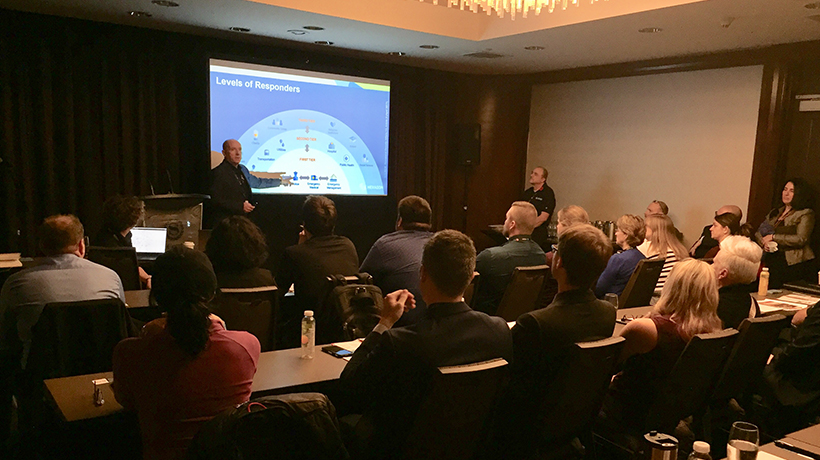APCO conferences are a great place to speak with leading experts that represent public safety communications agencies. At this year’s APCO Canada conference in Montreal, Quebec, Hexagon’s Safety & Infrastructure divisionpresented on how dispatchers can support safe city initiatives and what their role would look within a safe cities framework. Here’s what we focused on during our one-hour workshop.
What are the current challenges for dispatchers?
Twenty-first century dispatching looks significantly different than it did 10 years ago. But what has stayed constant? The goal to aid and protect citizens and officers. With the evolution of safe cities, it has become necessary for dispatchers to evolve again and go beyond their regular duties of gathering data and assisting responders. Here are challenges that dispatchers face in this new, complex world.
-
- Growing demand – More than half of the world’s population lives in cities, which are set to absorb more than 1 billion people over the next 13 years. This means dispatchers and responders will encounter more calls for service with fewer resources.
-
- Increasing complexity – Increasingly dense and diverse urban environments will have to operate with little spare capacity. That means there will be greater impacts and effects from incidents in these urban areas.
- Changing expectations – Accenture’s 2016 Public Services Pulse Survey found that 85 percent of citizens expected the same or higher quality digital services from government agencies. Citizens expect a digital government experience that is on par with commercial organizations, suggesting that the “good enough for government” mentality will be a thing of the past. Despite violent crimes dropping inthe U.S. over the last decades, support for police, gauged as trust and confidence, has not increased.
How can a safe cities framework make cities more effective?
So, what will the future look like for dispatchers? How can technology act as a force multiplier to help communication centers play a key role in safe city initiatives? Hexagon believes dispatchers play an important role within a safe city, and it’s important to look at how they can use emerging technology to support the advanced tasks that come their way. To help public safety agencies prepare for safe cities, they should focus on:
-
- Improving individual operations – Equip personnel with information and capabilities, automate processes, and target resources to the need of the citizen, incident, or officer
-
- Increasing citywide cooperation – Reduce redundancy and bridge gaps, work with common purpose and understanding, and undertake coordinated action
- Expanding engagement – Whether that means multi-agency resource management, data analysis and reporting, and/or next-generation call-taking and dispatching
When focusing on these strategies, the results for agencies will be safe and more resilient cities. Agencies will be able to better understand risk with evidence-based planning, mitigate those risks by targeting resources and preparing for incidents, enhance response efficiency and effectiveness, improve outcomes and perception with the public and other stakeholders, and reduce the costs for IT ownership.
If you’d like to learn more about our Safe Cities approach and capabilities, visit our the page on our website.















